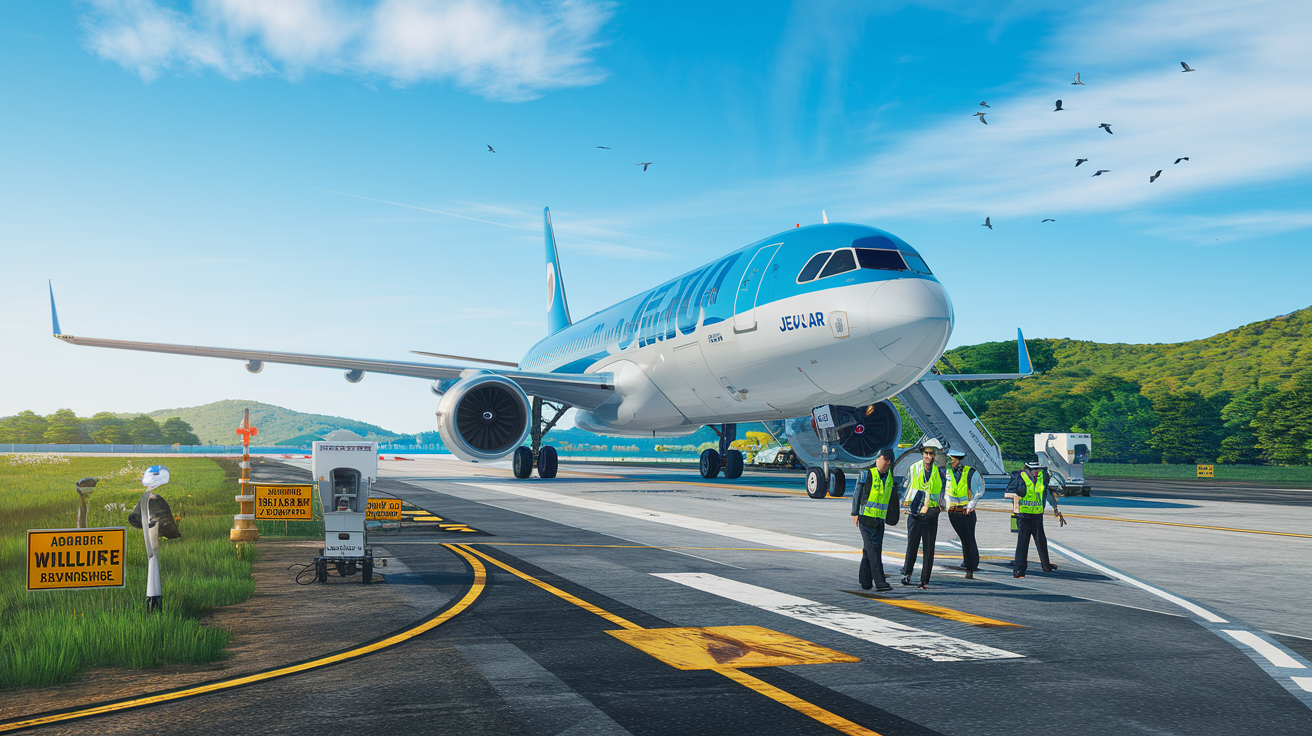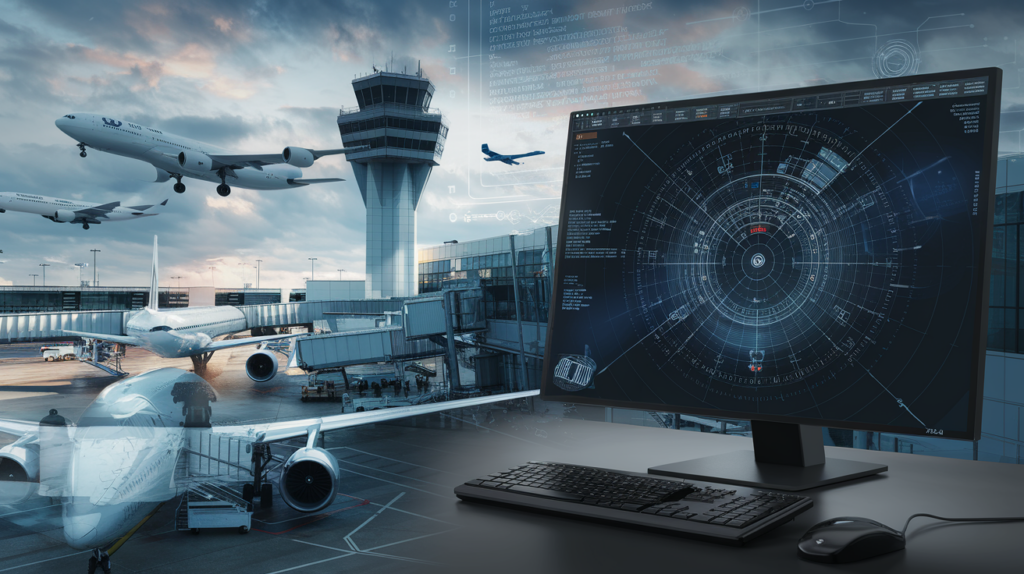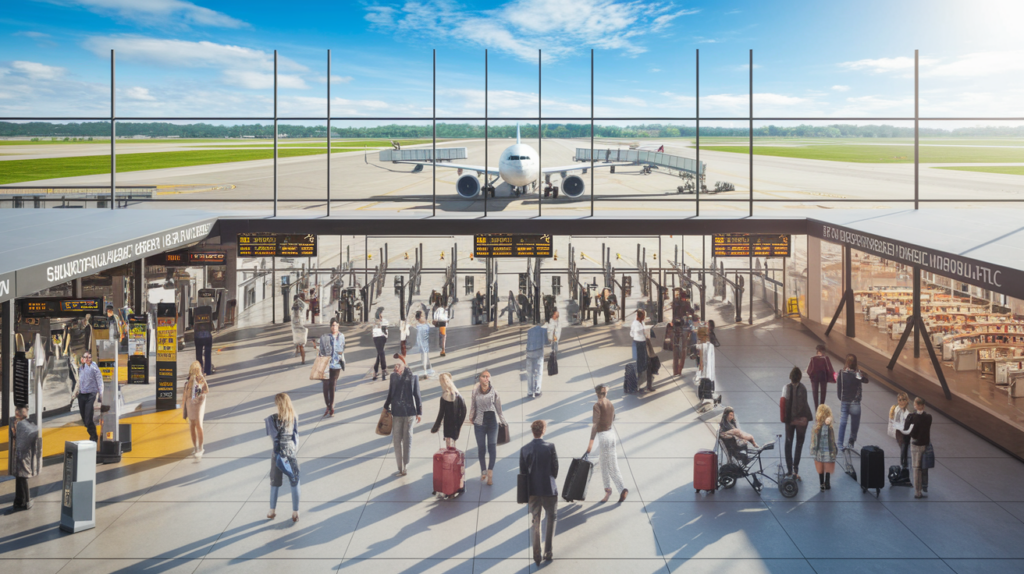In South Korea, a tragic plane crash of the Jeju Air airline claimed the lives of 179 people, underlining the serious threat that bird collisions represent for aviation. In response, the country decided to install thermal cameras and radar systems in all airports, to detect and prevent such accidents. This devastating crash, which took place on landing at Muan airport, has become the deadliest in the country's history, prompting the authorities to intensify their efforts to ensure the safety and security of its passengers. air safety.
On that dramatic Sunday, December 29, a plane belonging to the airline Jeju Air from Bangkok crashed on landing at Muan airport in South Korea. This tragedy, which claimed the lives of 179 of the 181 passengers on board, highlighted a well-known problem in the aviation industry: bird collisions. These incidents, known as bird collisions, often have disastrous consequences.
In response to this disaster, South Korea has decided to take drastic measures to prevent such events from happening again. The country has announced the installation of thermal cameras and bird-detection radar systems at all airports. This initiative aims to actively prevent collisions by detecting and deterring birds long before they reach aircraft flight paths.
An advanced detection and prevention system
The new technologies adopted in South Korea are mainly composed of surveillance devices by thermal cameras and radar systems. This equipment is designed to identify in real time the presence of birds in critical areas close to airports. Thanks to their advanced detection capabilities, these systems can alert airport authorities and initiate rapid intervention to remove potentially dangerous birds.
These sophisticated systems are capable of tracking bird movements and triggering removal mechanisms, such as audible alarms or the use of specialized drones. The aim is simple but crucial: to prevent any bird collisions on aircraft take-off and landing paths.
A tragic toll that calls for solutions
Bird collisions are not a new phenomenon in aviation, but rarely have such incidents reached such a scale in terms of human and material damage. The shock of the Jeju Air crash left an entire country stunned, and caused a wave of official reactions and questioning among the general public and experts alike.
Initial investigations suggest that the flight's take-off was disrupted by a flock of birds that got in the way just before landing. The hypothesis of a collision with a flock of birds was raised in the early hours following the incident, and is now emerging as the most likely hypothesis.
Extra effort for extra safety
Despite the scale of this tragedy, the application of these new air safety measures demonstrates South Korea's determination to take the lead in terms of prevention. The authorities are committed to reinforcing their vigilance and responsiveness in the face of an issue that could otherwise remain a risk factor for airlines worldwide.
The strengthening of preventive measures against bird collisions should also be accompanied by awareness-raising initiatives aimed at better understanding the migratory and nesting behavior of birds. This understanding will enable new strategies to be developed to reconcile aviation safety with the protection of avian biodiversity.
Essential international cooperation
To overcome the complex challenges posed by bird collisionsSouth Korea does not operate alone. The country works with other nations and international organizations to exchange knowledge and proven technologies. These exchanges are fundamental to developing sustainable, shared solutions for passenger and aircraft safety.
The road to safer aviation requires a collaborative approach that includes the efforts of governments, airlines and ornithological experts. Together, they are working to develop innovative solutions and continuously adapt airport infrastructures, so that every take-off and landing becomes a risk-free act for birds.

Measures to Prevent Collisions with Birds
| Element | Description |
| Thermal cameras | Installation at all airports |
| Radar systems | Use to detect birds |
| Continuous monitoring | 24/7 for real-time security |
| Staff training | Avian risk awareness session |
| Periodic assessment | Regular re-evaluation of existing measures |
| Interagency collaboration | Partnership with environmental agencies |
| Emergency plan | Strategy for rapid intervention |
| State-of-the-art technology | Adoption of advanced detection technologies |
| Strict regulation | Strict regulations |
| Data analysis | Using data to adjust measurements |
On the same theme
Understanding Spoofing: An Invisible Threat to Aviation Safety
Spoofing, a growing threat in cybersecurity, represents a hacking technique where credentials are falsified to usurp an identity. In aviation, this dangerous practice can hijack aircraft GPS systems, posing a serious risk to aviation security,...
Understanding airport infrastructures: the different zones of an airport
Understanding airport infrastructures is crucial to understanding how these transit areas function. Every area of the airport, from passenger terminals to runways and technical areas, plays a decisive role....
Malaysia Airlines proudly presents its very first A330neo
The gentle twilight of Toulouse witnessed a singular event: the departure of the A330neo, registration 9M-MNG, from the Airbus delivery center. At 8.52pm on November 28, 2024, this metal bird took off for Asia, landing...







